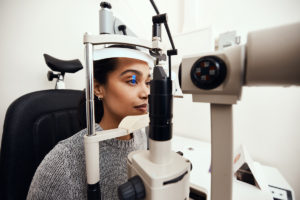How Doctors Test for Dry Eye Syndrome and Available Treatment Options
- Posted on: Nov 29 2022
 If your eyes aren’t producing enough tears or your tears are evaporating too quickly, you likely have dry eye syndrome. There are three layers of tear film: aqueous fluid, mucous and oil. Issues with any of the three layers can contribute to dry eye. Here, board-certified ophthalmologist Gregory Pamel of Pamel Vision and Laser Group discusses dry eye syndrome testing and treatment options.
If your eyes aren’t producing enough tears or your tears are evaporating too quickly, you likely have dry eye syndrome. There are three layers of tear film: aqueous fluid, mucous and oil. Issues with any of the three layers can contribute to dry eye. Here, board-certified ophthalmologist Gregory Pamel of Pamel Vision and Laser Group discusses dry eye syndrome testing and treatment options.
What Is Dry Eye Syndrome?
An insufficient amount of tears or poor quality tears can lead to dry eye syndrome. Symptoms of dry eye syndrome include:
- Blurry vision
- Feeling of something in the eye
- Light sensitivity
- Mucus strings
- Night vision issues
- Redness
- Watering
Dry eye may occur due to underlying medical conditions. Those diagnosed with lupus, rheumatoid arthritis or other autoimmune diseases are especially vulnerable, as these issues can damage tear glands.
Dry Eye Syndrome Testing
Testing for dry eye may involve several steps. All testing should start with a comprehensive eye examination. After that, testing centers on whether your eyes are making sufficient tears.
Schirmer Tear Test
The Schirmer tear test, which measures tear volume, is relatively straightforward. The doctor places strips of blotting paper beneath your lower eyelids. The paper remains there for five minutes, after which your eye care practitioner measures how much of the paper is tear-soaked.
Tear Breakup Time
The tear breakup time test consists of using a dye called fluorescein on the ocular surface to detect the time it takes for tear breakups. A short tear film indicates dry eye. While the dye is in the eye, the patient must look forward and not blink.
Dry Eye Syndrome Treatments
Most people can relieve dry eye symptoms by using nonprescription eyedrops. However, if your symptoms don’t improve after a few weeks, it’s time for professional help.
Dry eye syndrome treatments may include medications to reduce inflammation. Antibiotics, used either in the form of eyedrops or taken orally, may be prescribed. Other options include minute eye inserts, known as sustained-release eye lubricants, that dissolve and lubricate the eye.
Cholinergic medications stimulate tear production. They are taken orally or placed in the eye in gel or eyedrop form.
Some patients may benefit from scleral lenses. While similar to contact lenses, scleral lenses hold moisture on the eye’s surface.
Certain medications may cause dry eye. Your eye care doctor will consult with the physician prescribing these drugs to ascertain whether another medication that doesn’t include dry eye as a side effect would prove a substitute.
Contact Us
If you are experiencing dry eye symptoms, contact Pamel Vision and Laser Group and schedule a consultation with Dr. Gregory Pamel. After thorough testing, he will determine the appropriate treatment for your needs.
Posted in: Dry Eye




